According to EPA.gov, “Environmental justice (EJ) is the fair treatment and meaningful involvement of all people regardless of race, color, national origin, or income for the development, implementation, and enforcement of environmental laws, regulations, and policies.” And while that’s an admirable goal being pursued, unfortunately, it is not the reality yet. One example is that lower-income households face a disproportionately higher energy burden.

The DOE’s Low-Income Energy Affordability Data (LEAD) Tool shows that the national average energy burden for low-income households is 8.6%, three times higher than non-low-income households, estimated at 3%. Depending on location and income, the energy burden can be as high as 30% in some areas. Of all U.S. households, 44%, or about 50 million, are defined as low-income. That’s a considerable number of people who could benefit from lower-priced energy such as solar. However, the previous cost of solar essentially made it largely unattainable for a low-income household. Fortunately, there are non-profit organizations like GRID Alternatives’ Energy. Their mission is to “make solar power accessible to families who need the savings the most while providing hands-on solar installation experience to volunteers and job trainees. The HBCU Clean Energy Initiative (CEI) has compatible goals and has a standing memorandum of agreement and partnership with GRID Alternatives Energy (GRID). Therefore, we thought it only appropriate for CEI to report on the substantial contributions that GRID is making towards achieving environmental equity.
How Grid Got Started
GRID was founded during the 2001 California energy crisis. The two principals, Erica Mackie, P.E., and Tim Sears, P.E., were engineering professionals working in renewable energy in the private sector. However, they had an underlying belief that free, clean energy from the sun should be available to everyone regardless of income. So, they got to work forming GRID and developed a model to make solar PV technology practical and accessible. They completed their first single-family home installation in San Francisco in 2004, and in 2008 GRID was selected by the California Public Utilities Commission to serve as the state program manager for its Single-family Affordable Solar Homes (SASH) incentive program.
How GRID Works
GRID provides low-to-no-cost solar electric systems to families that qualify as low-income. They install them using a model that includes a combination of both volunteers and job trainees who get hands-on experience. According to GRID, each project has a “triple impact”: energy cost savings that help struggling families; a field training classroom for solar aspirants that supports employment; and a reduction in greenhouse gas emissions.” With at least 20 million low-income households, GRID can significantly impact the transition to clean energy and provide cost savings to people that need it the most.
How GRID is Funded
GRID is a non-profit supported through a combination of private grants, public funding, and volunteer donations in money and time. In addition to acting as the state program manager for SASH, they were selected by the California Public Utilities Commission (CPUC) to administer the Disadvantaged Communities – Single-family Solar Homes (DAC-SASH) program. This program provides $8.5 million in incentives for households in environmental justice communities to go solar, with job training opportunities integrated into every project. They are also participating in the California Department of Community Services and Development’s Low-Income Weatherization Program (LIWP).
Locations that GRID serves
Although GRID started in California and partners with the state on many projects, they do work in other regions. They serve families in California, Colorado, and the Mid-Atlantic region through eight affiliate offices. GRID also has an International Program serving Nicaragua, Nepal, and Mexico and a Tribal Program serving families nationwide. Their “Energy for All” initiative offers single-family, multifamily, and community solar installation services, project development, technical assistance, and multiple levels of workforce development.
Summary
For the U.S. to become fossil-fuel independent, we need to transition to abundant green energy that is uncomplicated to implement. Solar checks both of those boxes. However, we also must make it an equitable resource. It’s well documented that under-served communities at present and in the future will be disproportionately affected by climate change. Therefore, we need more leadership from local and state governments and non-profits such as GRID and CEI. Their crucial work will help disadvantaged communities not only attain environmental justice but broader social justice as well.
Click here to read more about the HBCU Clean Energy Initiative (CEI).
To read more about the HBCU Coalition, click here.
To read more blogs from CEI, click here.

